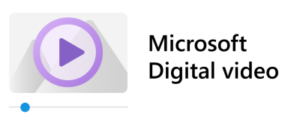
Editor’s note: This is the third video in our ongoing series that showcases our in-house experts using real-world scenarios to explore the transformative capabilities of Microsoft 365 Copilot.
Kai Cheng is among our first employees to train her colleagues on how to use Microsoft 365 Copilot—she was there when we at Microsoft became the first enterprise to fully deploy it. She learned a lot during those early days, findings and insights that she is now happy to share with customers in this video.
Press play to hear Cheng share her best tips for getting your employees to start using Copilot at your company.
Kai Cheng gives examples of ways you can use Microsoft 365 Copilot to make your day more productive and improve the quality of your work.
Cheng says you should always start with the “why.” She also suggests you communicate how Copilot improves productivity and efficiency. For example, while most know that Copilot can summarize documents and recap meetings, she reminds us that these capabilities are just the beginning.
Digging deeper
According to Cheng, showing off the capabilities of Copilot is not just about saving time. Its true power lies in its ability to improve the quality of deliverables and help users build new skills. For instance, Cheng demonstrates how users can use Copilot to ask questions about a document, leading to a deeper understanding and more informed decision-making.
This approach transforms passive reading into active learning, enabling users to grasp complex information and apply it effectively.
Learning with Microsoft 365 Copilot Chat
Cheng also highlights the potential of Copilot Chat as a powerful learning tool. Instead of relying on traditional search engines, users can ask Copilot to explain concepts in a way that’s tailored to their level of understanding. For example, a user from a non-technical background can ask Copilot to simplify explanations or provide relevant examples, making learning more personalized and accessible. This feature turns Copilot into a personal tutor, capable of adapting to individual learning styles.
Another significant benefit Cheng discusses is using Copilot to improve the quality of work deliverables. Beyond just drafting and editing documents, Copilot can suggest improvements such as adding visualizations or refining content to make it more compelling. This ensures that users not only complete tasks efficiently but also produce higher-quality outcomes that stand out.
Cheng encourages users to focus on how Copilot can unlock new productivity levels. For example, Copilot can automate routine tasks like meeting summaries and task prioritization, allowing users to spend more time on strategic, high-impact activities. By freeing up time, Copilot enables users to focus on what truly matters.
Before you demo Copilot
Cheng suggests that anyone preparing a Copilot demo always starts with three key considerations:
- First, how would you complete the task without Copilot?
- Second, how can Copilot improve the process?
- Finally, compare the two approaches to identify and communicate the specific benefits that Copilot offers.
This method ensures that your audience fully grasps the value of Copilot, making your training sessions more effective and impactful.
Thank you for watching Cheng’s presentation! We hope it helps you get started with your Copilot training and adoption efforts at your company.


- Watch the first video in our Copilot Champs series: Showcasing how our product managers are using Microsoft Copilot.
- Watch the second video in our Copilot Champs series: Using Microsoft 365 Copilot as a trusted advisor for your Six Sigma projects.
- Learn more about how our Copilot Champs Community is helping drive Microsoft 365 Copilot adoption here at Microsoft.





